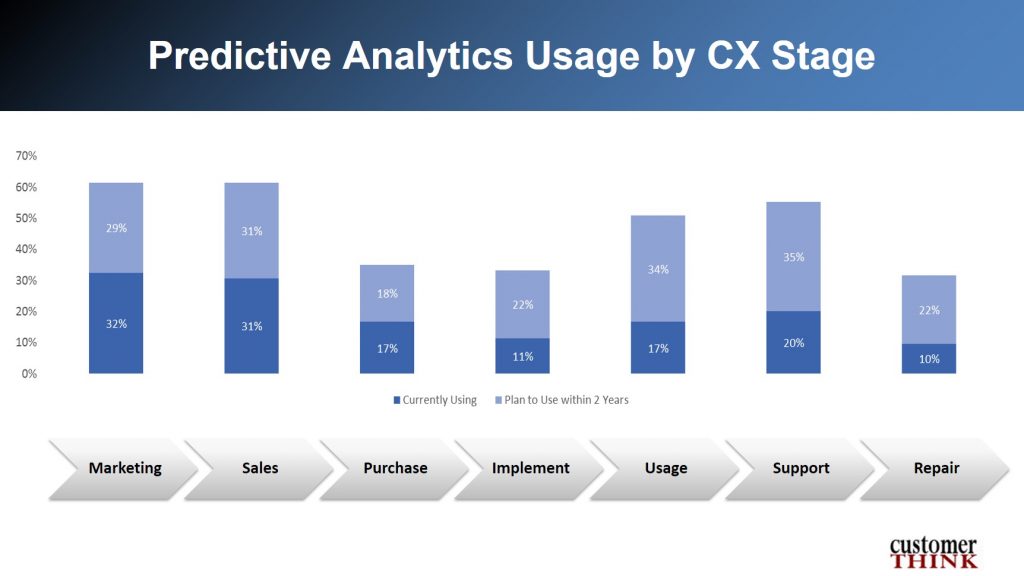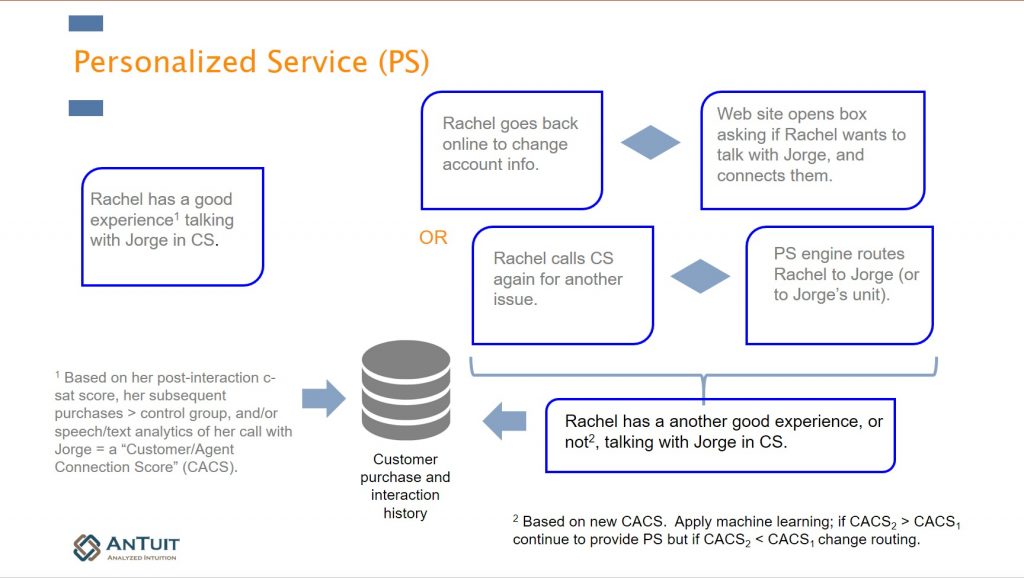[This article was inspired by teen angst singer Alanis Morissette’s song “You Oughta Know“.]
We’ve all had experiences as customers of being asked to do something that’s clearly unnecessary.
To my gym, I ask: “Why can’t I sign up for a class online inside of two days? Calling takes 10 times as long to accomplish the same thing.”
What I’m thinking: “You oughta know how many people are signed up real-time. When the class is full, close the class then.”
To my cable company, I ask: “Why don’t you know when your Internet service is not working right? I know you have all kinds of monitoring tools.”
What I’m thinking: “You oughta know before I call. In fact, why don’t you call me to say you’ve fixed the problem?”
To my mobile service, I ask: “Why do you continue to email me Apple upgrade offers when my service includes a Samsung device?”
What I’m thinking: “You oughta know my phone, and send me only relevant offers.”
Discover’s “Crusade” for Frictionless Experience
When we’re trying to do something routine, minimizing effort is essential. That’s what Discover Financial Services (NYSE: DFS), um, discovered, according to Dennis Michel, SVP, Customer Service & Engagement. Despite explosive growth in digital experiences (especially mobile), the financial services giant still has to handle about 35 million calls with a live agent. And one of the biggest reasons to call was to make a payment.

Unfortunately, Discover found higher attrition and lower spend associated with people making these calls. Why? Because they were “you oughta know” experiences. Michel says the old process required customers to go through the complete process step-by-step. Call, go through the IVR, then explain the situation to the agent. Many wasted steps because the company didn’t use what it already knew.
Predictive analytics enabled Discover to predict with 86% accuracy, based on the timing between an online bill pay attempt and a phone call, that an incoming call was about a payment. So for these calls they implemented a new process that reduced unnecessary steps through authentication, skipping the IVR, and routing to a dedicated payments team that was prepared to act.
As Michel puts it well, “time is the most important currency.” Result: shorter calls (good for both Discover and its customers), fewer defectors, and more spend. Perfect.
Now, this is a great example of a routine transaction where speed thrills. But what about other situations involving high-value customers struggling with a digital process? Using predictive analytics could enable processes intended to deliver more of a “wow” experience a la Zappos.
Predictive Analytics in Customer Experience
CustomerThink research of customer-centric practices revealed that business performance leaders make significantly more aggressive use of both descriptive and predictive analytics. And, based on 2016 deeper dive into predictive CX, we concluded:
- Predictive analytics usage is growing for customer experience (CX) applications in general, with predictive service applications expected to grow significantly over the next two years.
- Business leaders believe key potential benefits include improving customer loyalty and retention, personalization, being more proactive, and improving upsell/cross sell.
- A wide range of predictive applications can be implemented to improve customer experiences by using a unique combination of customer profile information, transactional data, and customer feedback.
- Determining the ROI requires a careful analysis of a wide variety of investments – from technologies to data science skills – and the expected return from revenue uplift, cost reduction or other benefits. For large contact centers, cost-related factors may be a more straightforward way to justify investments, based on reducing live support requirements.
- Implementation will require coordinated investments in data sources, analytic models, and compute resources. The industry is rapidly maturing, with technologies and skills readily available from vendors, integrators, and consultants.
In short, predictive service experiences are here and now. Business leaders are taking advantage of these capabilities to improve customer experiences and boost business performance.
Predictive Service on the Rise
If we look at predictive analytics throughout the end-to-end CX, we see more usage at the front end for marketing and sales currently. But notice the expected growth over the next two years in product usage and post-sales support.

Drilling down into service experiences, here is a ranked list of potential benefits, with improving customer loyalty and retention leading the way. The next three are essentially tied, aimed at personalization, being more proactive, and improving upsell/cross sell. However, as I discuss later, cost-related benefits, although ranked lower in the survey, can be crucial to build a business case.

Potential Applications for Predictive Service
During research for Your Customer Rules!: Delivering the Me2B Experiences That Todays Customers Demand, co-authors Bill Price and David Jaffe uncovered seven major needs and 39 sub-needs of the “Me2B” customer. Price says that the major needs of “you know me, you remember me,” “you give me choices,” and “you make it easy for me” are the best candidates for predictive service experiences.
Price, a partner at big data analytics firm Antuit points out that customers aren’t of equal value to a company, based on current vs. potential profitability; social power and influence; Net Promoter Score (NPS) or Customer Effort Score (CES). Each customer should be provided personalized service using routing, offers, and concessions driven by predictive analytics.
To illustrate, consider this example of personalized service (PS) for “Rachel.” Assume she has a good service experience with Jorge, based on agent score from a transaction survey, speech analysis of the call recording, and subsequent purchase rate.
When Rachel contacts customer service later, the PS engine could direct her to talk to Jorge again, or someone in the same group to maintain continuity. Another good experience reinforces the model, while a poor experience will cause the model to adapt, an example of “machine learning.”

Building the Business Case
Building the business case is a key issue. It’s relatively easy to figure out the investments required, which Price says may include:
- Web development (self-service, web logs sent to customer history, etc)
- Speech IVR and speech/text analytics
- Hiring, training, retention costs
- Co-browsing
- Desktop CRM with Wiki for knowledge sharing
- Data analytics expertise
But the return on that investment is harder to calculate. As mentioned previously, CustomerThink survey respondents believe that improving service experiences will pay off in increased loyalty, improved sales, and other relationship or top-line benefits. But these can be difficult to prove in a formal business case.
For large contact centers, cost benefits can form the core of predictive analytics returns. In this example from a client engagement, Price shows that reductions in live support costs, increased self-service containment, and even reduced employee turnover can form a compelling justification.

Improving “You Oughta Know” Experiences
Clearly there are many ways to use predictive analytics, in customer service and throughout an end-to-end customer experience. You can design experiences to add value or reduce effort, depending the value of the customer and what they are trying to get done.
That said, a good place to look for opportunities is experiences where the customer is asked to spend time that isn’t necessary, if only the company would act on the information it already has.
As Howard Lax points out in his recent post related to this subject, it’s important to not engineer all the emotion out of experiences in the drive to reduce effort. Still, he argues that removing negative experiences is crucial:
So while bland experiences may leave no imprint, that is far better than experiences that generate a negative emotional charge. For this reason, minimizing and repairing experiences that annoy/frustrate/anger/confuse customers is a top priority. In fact, defending against performance failures promises a greater positive payoff than improvements in areas of strength.
My advice: companies would be wise to work on two fronts simultaneously. Reduce effort on routine experiences, while looking for opportunities to add value elsewhere. Otherwise, you might end up being as efficient as a utility, and just as lovable.



